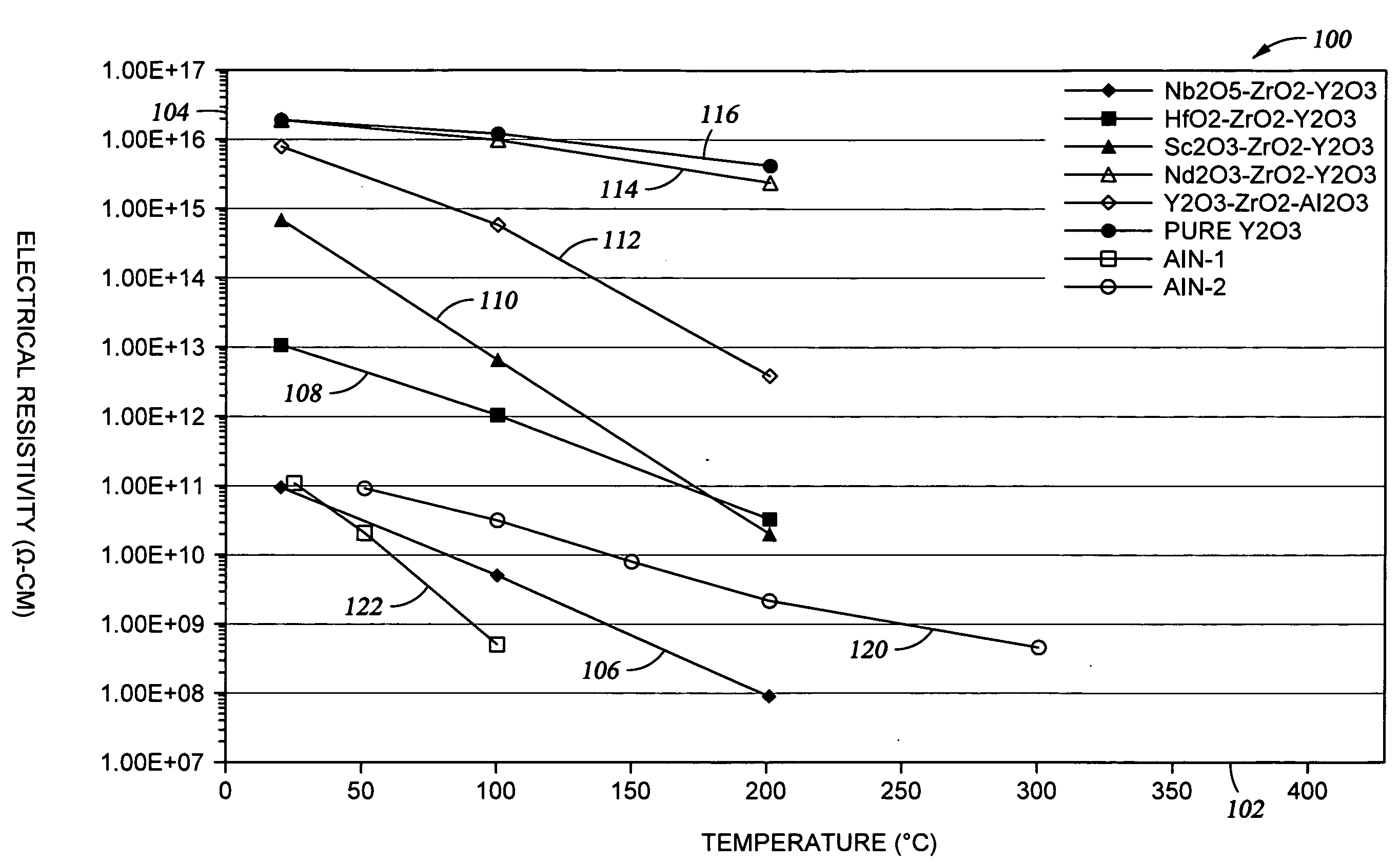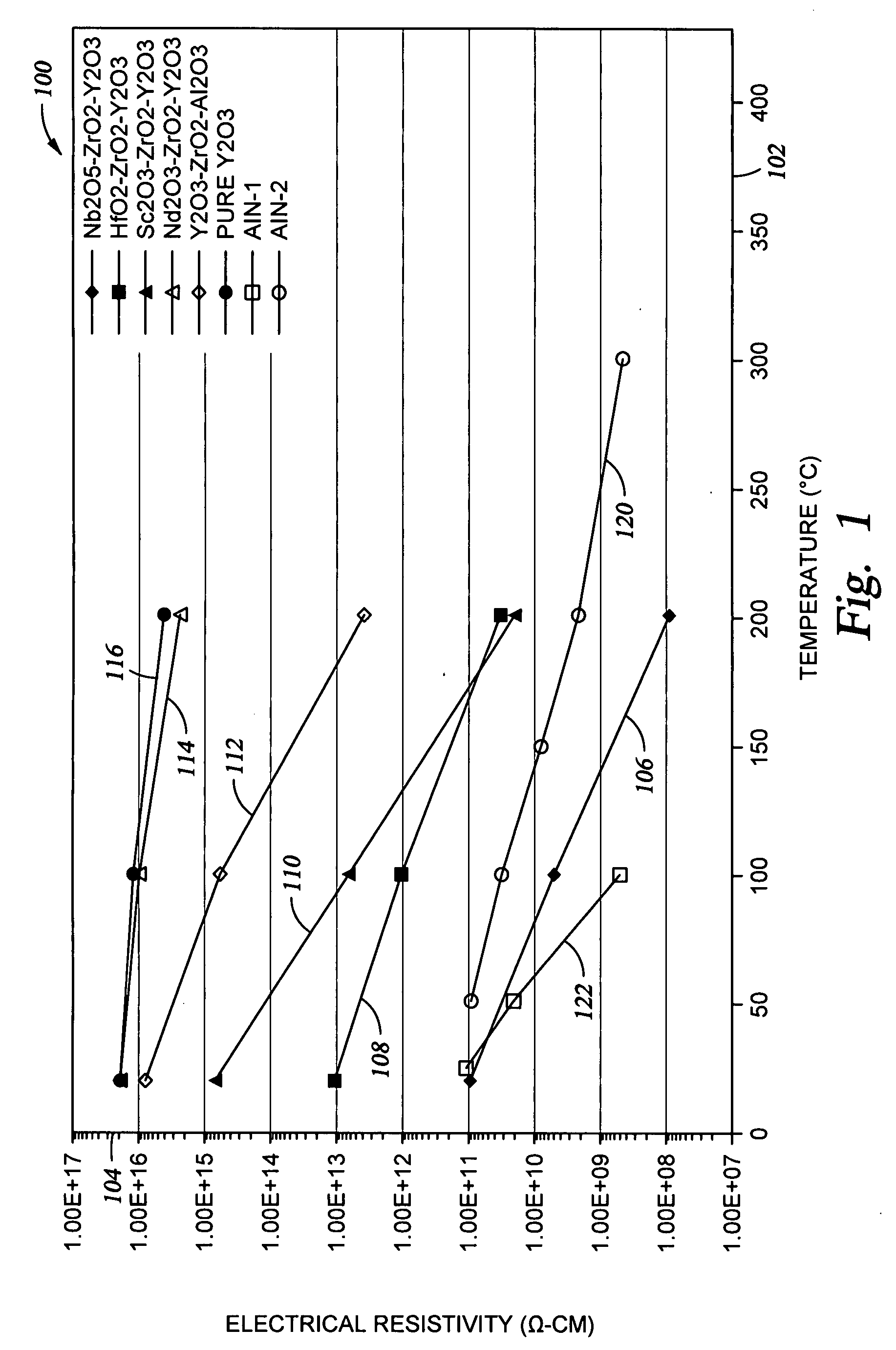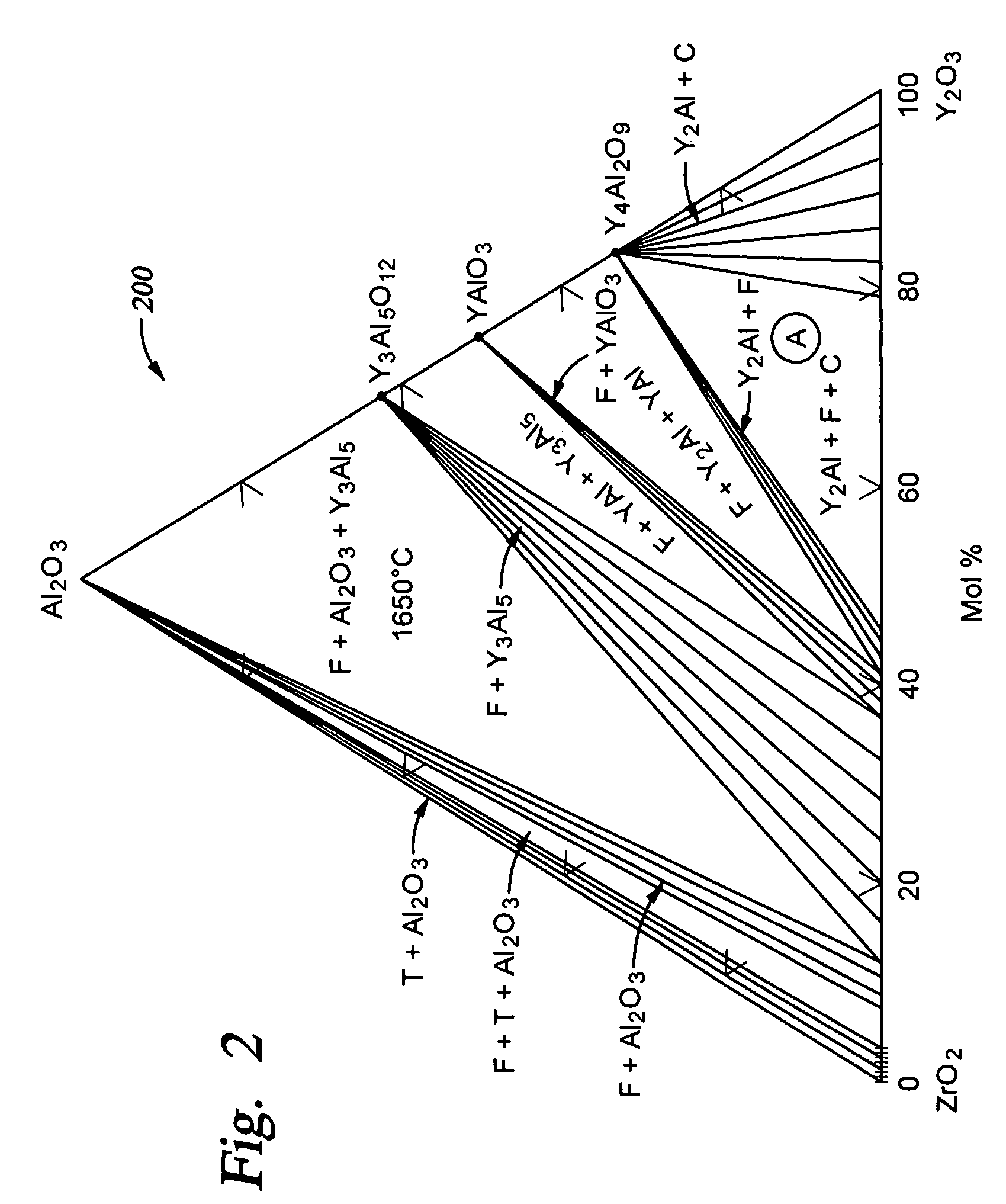Plasma-resistant ceramics with controlled electrical resistivity
- Summary
- Abstract
- Description
- Claims
- Application Information
AI Technical Summary
Benefits of technology
Problems solved by technology
Method used
Image
Examples
examples
[0037]
TABLEPrecursorWeightMeltingSinteringPrecursorPrecursorParts / 100PointTemp.PhaseDensitySample #Molar %Weight %Y2O3(° C.)(° C.)Comp.(g / cm3)1Y2O3: 75.0Y2O3: 77.82Y2O3: 100.002800>1800c-ss5.607HfO2: 20.0HfO2: 19.35HfO2: 24.86singleZrO2: 5.0ZrO2: 2.83ZrO2: 3.64phase**2Y2O3: 60.0Y2O3: 72.18Y2O3: 100.002360>1800c-ss4.936Sc2O3: 20.0Sc2O3: 14.69Sc2O3: 20.36singleZrO2: 20.0ZrO2: 13.13ZrO2: 18.19phase**3Y2O3: 60.0Y2O3: 59.58Y2O3: 100.00N / A*>1800c-ss5.555Nd2O3: 20.0Nd2O3: 29.58Nd2O3: 49.66singleZrO2: 20.0ZrO2: 10.84ZrO2: 18.19phase**4Y2O3: 70.0Y2O3: 75.53Y2O3: 100.00N / A*>1800c-ss**5.331Nb2O5: 10.0Nb2O5: 12.7Nb2O5: 16.82Y3NbOZrO2: 20.0ZrO2: 11.77ZrO2: 15.59and Nb*N / A = not available**c-ss means cubic yttria type solid solution.
example one
[0038]FIG. 1 shows a graph 100 illustrating electrical resistivity of a variety of ceramic materials, including the Type A and Type B materials made according to exemplary embodiments of the invention. The resistivity is shown on axis 104, as a function of temperature, which is shown on axis 102. The resistivity was measured at 1000 V in an air environment, using standard test conditions in accordance with ASTM D 1829-66 or JIS C2141.
[0039]Curve 106 shown in FIG. 1 is representative of the Nb2O5-comprising sintered ceramic material which is described as Sample #4 in the Table. With respect to sintered ceramic material comprising Nb2O5, acceptable electrical resistivity values are expected to be obtained for additional compositions as well, as illustrated by the phase diagram shown in FIG. 3. The sintered ceramic material contains three phases, which include a first phase solid solution comprising Y2O3—ZrO2—Nb2O5 which may make up about 60 molar % to about 90 molar % of the sintered ...
example two
[0041]Curve 108 shown in FIG. 1 is representative of the HfO2-comprising sintered ceramic material, made in accordance with the present invention, which is also described as Sample #1 in the Table. This ceramic material exhibits a higher resistivity than the Nb2O5-comprising material, but is useful for fabricating semiconductor processing apparatus components where arcing is less critical than with respect to an electrostatic chuck or a substrate lift pin.
PUM
| Property | Measurement | Unit |
|---|---|---|
| Temperature | aaaaa | aaaaa |
| Percent by mole | aaaaa | aaaaa |
| Percent by mole | aaaaa | aaaaa |
Abstract
Description
Claims
Application Information
 Login to View More
Login to View More - R&D
- Intellectual Property
- Life Sciences
- Materials
- Tech Scout
- Unparalleled Data Quality
- Higher Quality Content
- 60% Fewer Hallucinations
Browse by: Latest US Patents, China's latest patents, Technical Efficacy Thesaurus, Application Domain, Technology Topic, Popular Technical Reports.
© 2025 PatSnap. All rights reserved.Legal|Privacy policy|Modern Slavery Act Transparency Statement|Sitemap|About US| Contact US: help@patsnap.com



